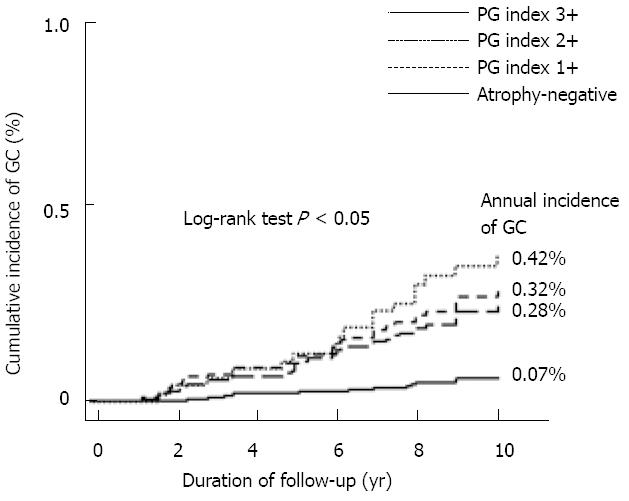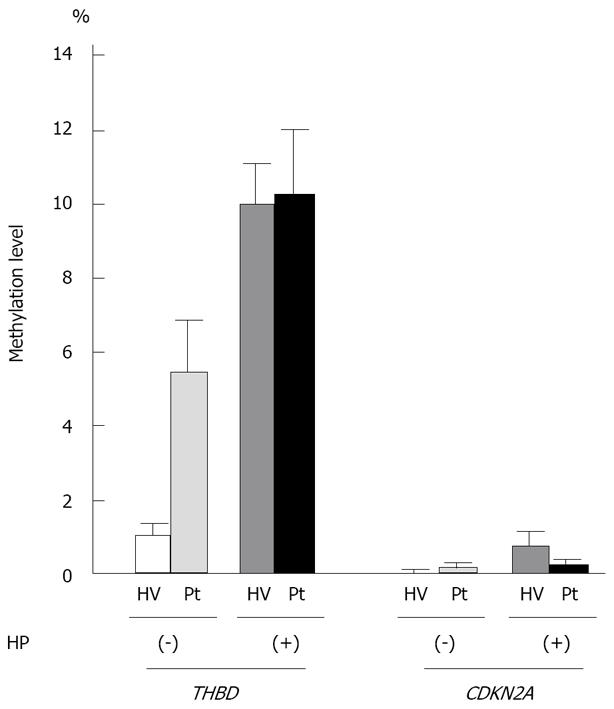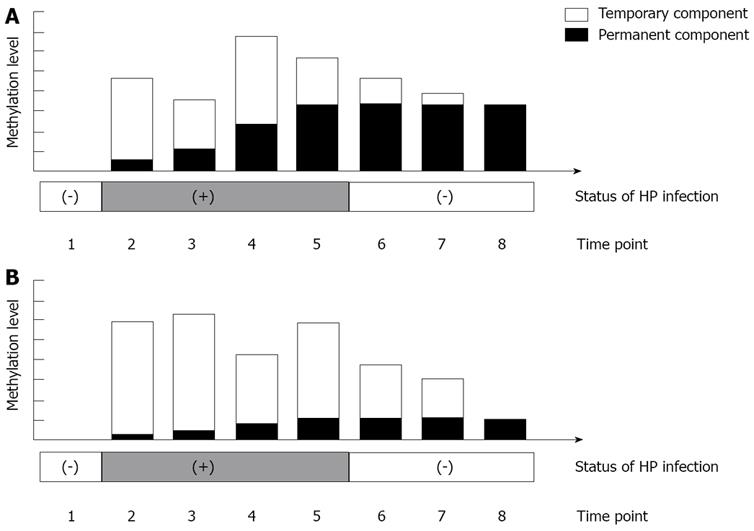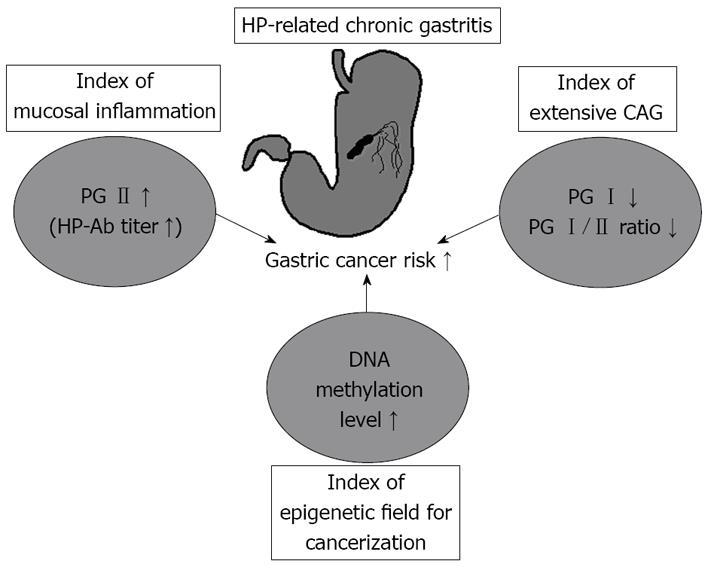Copyright
©2010 Baishideng Publishing Group Co.
World J Gastrointest Endosc. Dec 16, 2010; 2(12): 381-387
Published online Dec 16, 2010. doi: 10.4253/wjge.v2.i12.381
Published online Dec 16, 2010. doi: 10.4253/wjge.v2.i12.381
Figure 1 Kaplan-Meier analysis of gastric cancer development in subjects classified using the index of the pepsinogen test (modified from Yanaoka et al[25]).
This shows the annual incidence of gastric cancer (GC) in each population identified based on serum pepsinogen test index criteria in middle-aged healthy men. With chronic atrophic gastritis progression, incidence of GC increased in a stepwise and significant manner. PG: pepsinogen.
Figure 2 Gastric cancer incidence and Helicobacter pylori-related chronic gastritis stage classification based on a combination of the serum pepsinogen test and helicobacter pylori-infection diagnosis (modified from Ohata et al[23]).
This shows percentages in each group, among middle-aged healthy men, based on the serum pepsinogen test and Helicobacter pylori (HP) antibody titers. As HP-related chronic gastritis stage progressed from Group A to Group D, annual incidence of gastric cancer increased in a stepwise and significant manner. PG: pepsinogen.
Figure 3 Relationship between gastric mucosae methylation levels and Helicobacter pylori infection/gastric cancer (modified from Maekita et al[34]).
This shows mean methylation levels for the THBD and CDKN2A genes as measured by quantitative methylation-specific PCR in endoscopically biopsied gastric mucosae. Among Helicobacter pylori (HP)-negative cases, non-cancerous gastric mucosae in gastric cancer (GC) patients showed higher methylation levels than gastric mucosa in healthy volunteers. Among HP-positive cases, methylation levels were high regardless of the presence or absence of GC. Methylation susceptibility differed among genes. Compared to THBD, CDKN2A showed very little induction of methylation. The error bar denotes standard error. HV: healthy volunteers; Pt: patients.
Figure 4 Temporary DNA methylation and permanent DNA methylation of gastric mucosae.
DNA methylation includes temporary methylation, which is induced only during Helicobacter pylori (HP) infection, and permanent methylation, which persists even after elimination of HP infection. From time points 2 to 5, when HP infection was positive, overall methylation levels changed, with increases in permanent methylation, and increases and decreases in temporary methylation. At this stage, temporary methylation showed large fluctuations, so distinguishing differences in gastric cancer (GC) risk between cases was difficult. However, after spontaneous elimination of HP or HP eradication, at time point 8, at which time only permanent DNA methylation was present, GC risk was clearly higher in Figure 4A.
Figure 5 Schematic presentation of novel risk markers for gastric cancer screening.
HP: Helicobacter pylori; CAG: chronic atrophic gastritis; PG: pepsinogen.
- Citation: Enomoto S, Maekita T, Ohata H, Yanaoka K, Oka M, Ichinose M. Novel risk markers for gastric cancer screening: Present status and future prospects. World J Gastrointest Endosc 2010; 2(12): 381-387
- URL: https://www.wjgnet.com/1948-5190/full/v2/i12/381.htm
- DOI: https://dx.doi.org/10.4253/wjge.v2.i12.381













